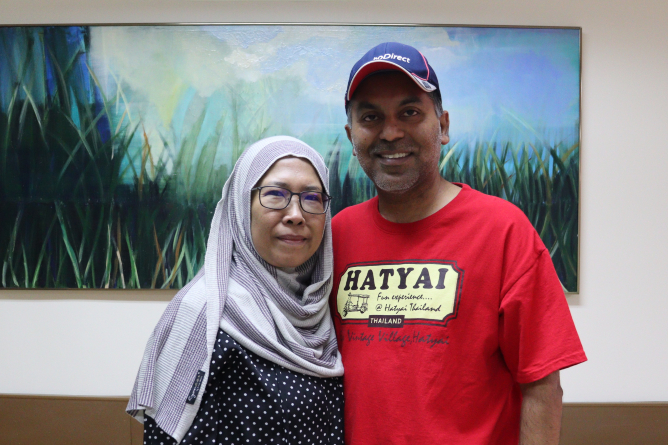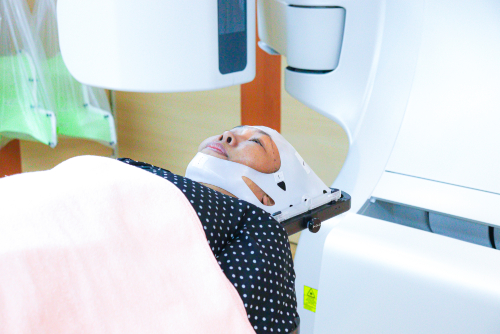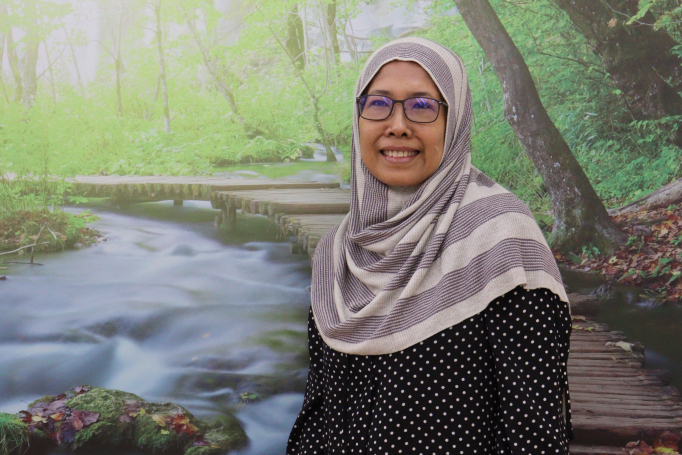
What began as a persistent cough in 2014 led to a diagnosis that would change Pn Roziah’s life: Stage 4 lung cancer. This is her story of survival, metastasis, and continued determination to live.
A Shocking Diagnosis and a Personalised Plan
Pn Roziah was stunned when she received her diagnosis. But being someone who doesn’t give in easily, she resolved to fight the disease head-on. She began her cancer treatment under the care of Consultant Oncologist Dr. Matin Mellor at Subang Jaya Medical Centre (SJMC).
“It’s quite hard to differentiate early lung cancer from late-stage lung cancer. Usually, when patients present with symptoms, the disease is already advanced,” Dr. Matin explained.
Through the work of Dr. Pathmanathan Rajadurai, Consultant Pathologist at SJMC, the team understood that every case of lung cancer is unique. Different genetic mutations can drive the disease, and learning what drives each case is essential to treating it effectively. Using Next Generation Sequencing (NGS) – a service available at SJMC – they were able to analyse Pn Roziah’s tumour at the genetic level.
Dr. Matin recommended targeted therapy, a treatment tailored to attack the specific genetic mutation fuelling her cancer. This personalised approach would give her a better chance of responding to the therapy and living longer with the disease.
“Treatment took a toll – physically and emotionally – and I experienced side effects like hair loss, dry skin, and nausea,” Pn Roziah recalls. But she refused to let cancer dictate how she should live. Determined to maintain her normalcy, she continued working in customer service, finding purpose in helping others.
“My job gave me something to look forward to, and my husband was very supportive of my decision to keep going,” she says.
For the next several years, Pn Roziah remained under close monitoring at SJMC and responded well to treatment.
A New Setback: Brain Metastasis
Seven years later, in 2021, just as things felt more manageable, Pn Roziah began experiencing sudden seizures. An MRI scan revealed that her cancer had spread to her brain. She had developed a 4cm tumour on the left side of her brain and a smaller 2mm tumour on the right.
The larger tumour was identified as the source of her seizures. Dr. Matin referred her to Consultant Neurosurgeon Dr. Muruga Kumar, who explained the complexity of brain tumour surgery.
“At SJMC, we use advanced tools like High-Definition Fibre Tracking, which allows us to identify critical motor pathways near the tumour. This helps avoid damaging areas of the brain responsible for movement,” said Dr. Kumar.
In addition, the surgical team used intraoperative imaging – including real-time MRI and ultrasound – to assess how much of the tumour was removed during surgery and ensure a complete resection whenever possible. A more complete removal increases the effectiveness of follow-up treatments like radiotherapy and chemotherapy.
Pn Roziah’s surgery was a success. The 4cm tumour was removed without complications, and she began a focused physiotherapy programme to regain her strength and mobility. She recovered steadily and was soon able to resume daily activities.

Pn Roziah undergoing radiosurgery via linear accelerator (LINAC) with ExacTrac Dynamic®.
Minimally Invasive Radiosurgery for Brain Tumour Control
While Pn Roziah was healing, the smaller tumour on the right side of her brain grew from 2mm to 7mm. To avoid undergoing another invasive surgery, Dr. Matin recommended radiosurgery — a non-invasive treatment that targets tumours using high-dose radiation.
Dr. Matin used the linear accelerator (LINAC) with ExacTrac Dynamic®, an advanced system designed to deliver radiation with pinpoint accuracy. Unlike conventional surgery, this method does not require incisions and offers faster recovery.
“The precision of ExacTrac Dynamic® allows us to target small brain tumours with such accuracy that we can significantly minimise impact on healthy surrounding tissue, leading to better outcomes for patients,” explained Dr. Matin.
Catherine Lee, Director of the Cancer & Radiosurgery Centre at SJMC, added that the system uses 4D imaging with surface and thermal tracking. This enables precise patient positioning and tumour localisation in real time, while also maintaining comfort.
Like traditional radiosurgery options that require patients to be immobilised for hours, ExacTrac Dynamic® enables treatment to be completed in about 20 minutes with an open-face mask — a much more tolerable experience.
“I found this treatment refreshingly efficient compared to others. It was quick, comfortable, and I still felt cared for throughout,” said Pn Roziah.
The radiosurgery was effective in halting the tumour’s growth, giving her more time and better quality of life.

“My husband was very supportive of my decision to keep going,” Pn. Roziah says.
Living With Cancer — and Moving Forward
Today, Pn Roziah continues to live with resilience and purpose. She remains under long-term follow-up care at SJMC, staying proactive with her health and supported by her medical team and loved ones.
Her advice to others going through a similar journey is grounded in experience and strength:
“Don’t let fear take over. Lean on the love around you. Find something each day to live for. And no matter what, keep moving forward.”
